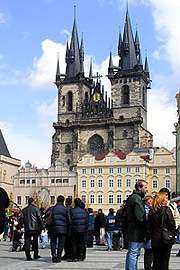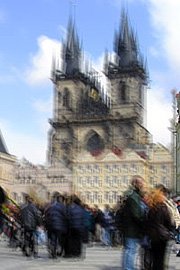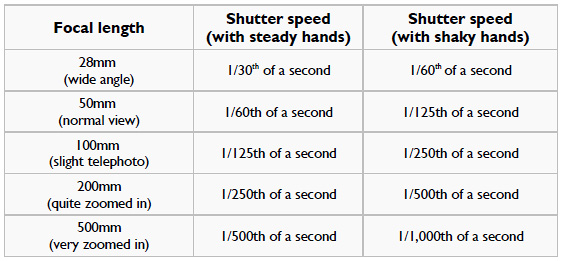Camera Shake - and how to avoid it
You might start by asking "what is camera shake?"
Good question! And another good question could be "isn't it just the same thing as a blurry photo?"
So let me start by answering those two questions, and then I'll show you how you can avoid it completely.
It's not just a blurry photo
Camera shake is when the camera moves or wobbles when the shutter is open. This leads to photos where it looks like the camera is seeing double and a ghost image is laid over the top of the actual image.With camera shake, the photo was in focus, but the camera moved. With a blurry photo, the camera was never in focus in the first place.
Have a look at the example photos below:

|

|

|
|
Blurry
|
Sharp
|
Camera Shake
|
So, now you know what camera shake is, the next obvious question is...
What causes camera shake?
And the answer is fairly straightforward.It's caused by the camera moving when the shutter was pressed.
And the movement was caused because either:
-
A - the person holding the camera wasn't holding it very well (it wasn't you holding it, was it?!!?)
- ... or ...
B - the shutter speed was too slow, in which case there was no way in the world the person taking the photo could have held the camera steady (phew - got you off the hook!)
The shutter speed being too slow was probably caused by taking photos in low light.
Speeds are slower in low light because the shutter is open for longer, and, unless the camera is held rock steady, camera shake will occur.
How to avoid camera shake
One of the easiest ways to avoid camera shake is to make sure you are taking photos with a fast shutter speed.Because if the shutter speed is fast enough, even a small movement of the camera won't show up.
A general rule of thumb for avoiding camera shake when hand-holding a digital SLR, and works well for compact cameras too, is to ensure the shutter speed is as fast as the focal length of the lens you are using.
It's often described as being 'one over the focal length'.
One over the focal length means that if the lens you are using is a 60mm lens the shutter speed should be 1/60 of a second. One over a 125mm lens means a shutter speed of 1/125 of a second, and so on.
Have a look at the table below for a ready reckoner of required shutter speeds and their corresponding focal lengths:
 |
The reason for this rule is that the longer the lens (i.e. the more telephoto it is) the more likely camera shake is.
Even the smallest movements when zooming in to this level are magnified. If you've ever used a telescope you'll understand. Just give a telescope a small nudge and the view you are looking at wobbles like mad.
It's the same with long telephoto lenses on DSLRs.
If you set a really fast shutter speed however you will be able to freeze movement – and hence avoid camera shake. That's why the longer the telephoto lens, the faster the shutter speed needs to be.
This article is just a small extract adapted from the hugely successful
"Better Photography" eBook package - six downloadable eBooks
to guide you through the perfect picture taking process.
Find out more about dSLR cameras, and how you
can improve your photography skills.
"Better Photography" eBook package - six downloadable eBooks
to guide you through the perfect picture taking process.
Find out more about dSLR cameras, and how you
can improve your photography skills.
Read more...
Find out how you can avoid camera shake when taking photosReturn from the camera shake information page to digital-photography-tips.net home
